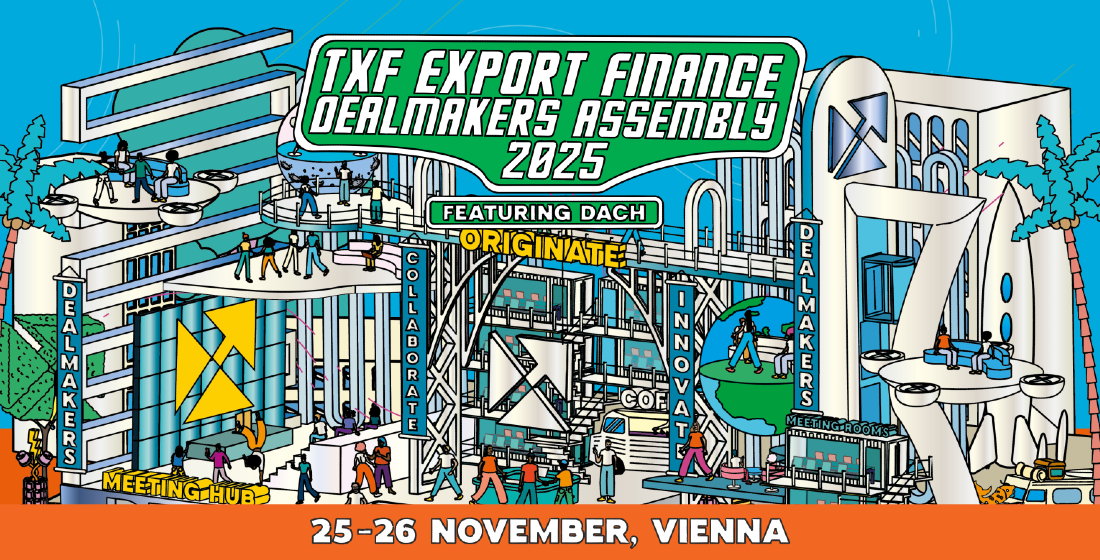Learning the ways of ECA finance
ECA finance is often complex, with each transaction varying from deal to deal. TXF spoke with Francisco Anzola, Principal at CC Solutions, to find out why ECA training is key to leveraging the growth of exporters and local project sponsors in their own markets and abroad.


TXF: How active do you see the export finance market in MENA being at the moment?
Francisco Anzola (FA): The export finance market in MENA continues to be strong and I expect it to become much stronger in the near future. In fact, there’s a large pipeline of infrastructure projects in the region that will need financing. According to BMI Research, the construction sector in the region is expected to outpace global growth, expanding by an annualised average of 6.5% in the next five years. Positive demographic trends, national economic diversification agendas, and rising oil prices contribute to this bullish outlook. And, this massive construction activity, expected to reach $330 billion by 2022, will need sources of funding too.
I see ECAs playing at least as big a role in the financing mix for projects in the future as they have more recently. The region will need access to any, and all financing sources it can tap, including ECAs, if it is to successfully fund its ambitious project pipeline. But ECA financing has even more going for it in this market.
Firstly, when ECAs get involved in a project, it can lead to a ‘halo effect’, effectively attracting more financiers and lowering financing costs for the project. In my opinion, ECAs have been and will continue to be crucial in making good projects in the region bankable. Secondly, as protectionism gains ground in Europe and the United States, some countries may use their ECAs to mitigate its impact, which I think we have seen happen in the UK following the Brexit referendum. Finally, ECAs are likely to continue to be very important because so much of the project pipeline involves the importation and installation of capital equipment, which is what naturally drives ECA financing.
TXF: We see a number of new ECAs opening offices in the region. What’s driving this?
FA: I believe it’s the growing realisation that ECA financing will only become more relevant in the MENA region in the short and medium terms. We have already talked about how ECA financing is poised to continue being of key importance in the funding of infrastructure in the region. I would like to add that more and more buyers of foreign goods and services and project sponsors expect procurement bids to be accompanied by financing offers, and in many cases, explicitly, financing offers backed by ECAs. I believe that, at least in a number of sectors, capital equipment exporters need to have the support of an ECA in order to be competitive – just to get through the door, so to speak. Lastly, I think that ECAs recognise that the MENA market is especially critical for their exporters. There are many regions in the world with a positive economic outlook but MENA is a region in which economic growth is accompanied by ambitious investment plans, the proven ability to get projects built, and sustainable fiscal management, among other factors.
TXF: Are you seeing more local banks and corporates utilising export finance?
FA: Large international banks, corporates, and parastatals in MENA have been effective in the use of ECA financing. However, economic activity in MENA is driven by more than a few national champions. The level of economic activity undertaken by local firms, whether they be large, medium, or small is enormous. These, I think, are almost uncharted waters in terms of export finance. The use of ECA financing could unleash the growth of these companies in their own markets and abroad.
TXF: What are the key educational needs for the market, and what does this course enable participants to go on and do?
FA: The challenge with learning about ECA financing, and this doesn’t only apply to MENA, by the way, is that it’s a subject for which the body of knowledge is very vast, and there are great amounts of detail that one must know in order to be effective. Much of this is different from ECA to ECA. Yes, there’s a common set of principles that underpin the discipline, but beyond them, there is a great deal of variation.
The traditional way professionals learn about export finance is as they work on ECA transactions, which is almost too late, when you think about it. We have typically relied on the experience of our colleagues, and sometimes even by trial and error. Another problem with this approach is it’s very common to assume that once one transaction has been done with an ECA, that a different ECA works the same way – and in fact, they may be very different. This alone has been the cause of some multi-million dollar funding shortfalls in some projects, for example.
In our training course, we take the participants through the different core aspects of ECA financing. We teach modules on financing products, financing structures, eligibility, disbursements, and so forth. We discuss the underlying principles common to all ECAs, but then, in each module, we discuss in detail how some ECAs differ from other ECAs. We try to prepare the participants to know what questions to ask when confronted with a transaction with an ECA with which they are not familiar. We do all this by relying on real-life case studies, examples, and group activities. Participants will receive a copy of our 2018 Agency Finance Handbook, which introduces all of the world’s ECAs. We follow up the class with an online certification and we’ll always be available to the participants if they have questions in the future. I am especially looking forward to our training in Dubai where we'll give special attention to the types of financing products most used and the prevalent industries in the MENA region. It will be a great class, and I look forward to seeing you there!
The ECA Finance Training dates for 2018 are as follows:
4 October, Dubai | One Day Programme | View website and book
12 & 13 November, Hong Kong | Two Day Programme | Visit website and book





